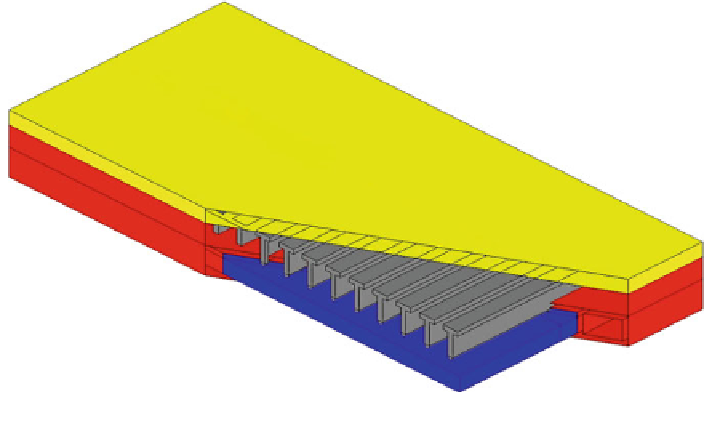Biomedical Engineering Reference
In-Depth Information
Fig. 6.5
Pressure relief system based on the principle of pressure and back pressure (BIODYN)
and current industrial efforts at improvement, the standard has neither been revised
nor adapted to new support materials and designs. Other shortcomings are that
testing methods are not standardized and their value is limited to measuring
interface pressures or static/dynamic reaction forces.
6.2.2 Common Support Systems
Many mattresses, cushions and other devices are available for pressure sore pre-
vention as well as to increase comfort. These systems can be divided into static
(passive) and dynamic systems. Dynamic systems most often include alternating
pressure. Objective evaluation, however, of the mechanical effects of the supports on
the tissue, is lacking. Static devices most often involve polymeric soft foam material
as the primary mechanically significant material in contact with body tissue. An
approach to mechanically characterize such materials is presented in
Sect. 4.2
Many different mattress designs are available. In Fig.
6.2
two different double-
layered, structured soft foam mattresses with structured inlays (Fig.
6.2
a) incorpo-
rating a gap between the upper and lower layers (Fig.
6.2
b) are shown. The D
UN-
LOPILLO
mattress (a) is designed for comfort whereas the V
ISCOELASTIC
mattress (b) is
claimed to provide decubitus protection (W
ULFF
M
ED
T
EC
). Figure
6.3
displays a 3-layered soft foam anti-decubitus mattress (Thevo Adapt Plus 100,
T
HOMASHILFEN
). In Fig.
6.4
, a mattress base frame with active elastic wing leaf units
for micro stimulation (MIS) is shown. A newly developed body supporting system
based on the principle of pressure and back pressure (B
IODYN
) is presented in Fig.
6.5
.

